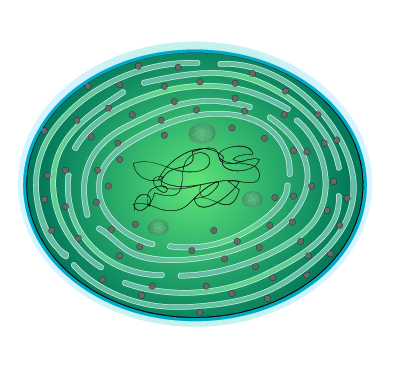Facts for Kids
Cyanobacteria are a group of tiny, blue-green bacteria that can produce their own food through photosynthesis, playing a vital role in the environment.
Overview
Cyanobacterial Blooms
Ecological Importance
What Are Cyanobacteria
Habitat And Distribution
Morphology And Structure
Cyanobacteria And Human Impact
Photosynthesis In Cyanobacteria
Cyanobacteria In The Nitrogen Cycle
Research And Biotechnology Applications

Inside this Article
Carbon Dioxide
Biotechnology
Fresh Water
Chlorophyll
Atmosphere
Pollution
Nitrogen
Bacteria
Oxygen
Health
Did you know?
🌟 Cyanobacteria are tiny living organisms that can be found in water, soil, and even on rocks!
🌊 They are often called blue-green algae, but they are not actual algae.
☀️ Cyanobacteria can make their own food using sunlight through a process called photosynthesis.
🦈 They produce oxygen, which is essential for us to breathe!
💡 Some types of cyanobacteria can glow in the dark, just like superheroes!
🌍 Cyanobacteria can survive in various habitats, from oceans to deserts and even in space!
🌀 They come in many different shapes, including spiral and stick-like forms.
🌱 Cyanobacteria played a leading role in creating the breathable atmosphere over 2.4 billion years ago.
🚨 Sometimes, they can grow too quickly, leading to harmful 'blooms' in the water.
🔋 Scientists are researching cyanobacteria for their potential to create biofuels and medicines.
Introduction
Cyanobacteria are super important because they help our planet by producing oxygen and providing food for many creatures. Some types can glow in the dark! ✨
Imagine tiny little superheroes helping to keep our world healthy and full of life!
Cyanobacterial Blooms
Ecological Importance
They are known as primary producers because they create food for many aquatic creatures like fish and crustaceans. 🚤
They also help keep water clean by breaking down pollutants and providing oxygen! 🐟
Furthermore, they help fix nitrogen, a nutrient that plants need to grow. This makes them essential for healthy ecosystems. They are like little factories that help our earth thrive!
What Are Cyanobacteria?
They belong to the bacteria family but are unique because they perform photosynthesis! This means they use sunlight to make energy and food. 🌱
They come in many different shapes, like spirals or filaments. Some are blue, some are green, and others are even reddish! These little organisms are essential for making our air clean and habitats lush with life. 🌈
Habitat And Distribution
️ They are found in every part of the world, from freezing Antarctica to hot volcanic regions! Can you believe they can also survive in space? Scientists say that they may be able to live on other planets too! 🚀
Morphology And Structure
Most of them are small and can only be seen under a microscope. They can be round, spiral, or stick-like. They have a protective outer layer called a cell wall. Inside, they have special parts called thylakoids, which capture sunlight. 🌞
The colors of these bacteria come from pigments like chlorophyll that help them to photosynthesize. Some types can form colonies, where they stick together and create a colorful film on water! 🌈
Cyanobacteria And Human Impact
️ When we use fertilizers, the excess nutrients can flow into lakes and rivers, causing harmful blooms! 🌾🧪 However, scientists are studying cyanobacteria to make new technologies, such as biofuels! 🔋
They can also help clean up pollution! With smart practices, we can reduce our negative impact and help these tiny organisms thrive. Remember, caring for cyanobacteria means caring for our planet! 🌎💚
Photosynthesis In Cyanobacteria
They use sunlight to change carbon dioxide and water into food and oxygen. The process happens in their thylakoids. They produce oxygen, which is super important for us to breathe! 🥰
Did you know that cyanobacteria were among the first organisms to do this over 2.4 billion years ago? 🌍
They helped create the breathable atmosphere we have today! Wow, talk about being a pioneer! 🦸
♂️
Cyanobacteria In The Nitrogen Cycle
Nitrogen is essential for life, but most plants can't use it directly from the air. Some cyanobacteria can "fix" nitrogen from the atmosphere, turning it into a form that plants can use. 🌾
This makes the soil richer and helps crops grow better! Farmers often love these bacteria because they can improve the quality of crops without using chemicals. So, we can thank cyanobacteria for healthy food! 🥕🍅
Research And Biotechnology Applications
Researchers explore their uses in biotechnology, which means using living organisms to create new products. For instance, some cyanobacteria can produce biofuels, a cleaner energy source! 🔋
They are also being studied for their ability to create medicines and natural dyes. 🌈
With their help, we may find ways to fight pollution and create better foods! So, cyanobacteria are not just important for nature, but they could help our future too! 🌟

